With a Second Stimulus Bill in Limbo, Chobani Steps Up for Workers


An immigrant himself, Chobani founder and CEO Hamdi Ulukaya knows the struggles of establishing oneself in a new country, including finding a job that pays a living wage. Such fears felt by many U.S. workers are even more exacerbated as the fate of a second stimulus bill is still in limbo as of press time.
Since Ulukaya, a Turkish-Kurdish native, started the company in an abandoned Kraft factory in upstate South Edmeston, New York, in 2005, Chobani has hooked the country on Greek yogurt. The company has grown to 2,000 employees and makes about $1.5 billion annually. Ulukaya, though, felt that many of his employees — especially those on factory floors — were not directly benefiting from the company’s exploding success. “Society moves on the shoulders of people like that,” Ulukaya told Fortune.
To help fold those workers into the Chobani success story, the company has pledged to increase the starting hourly wage to at least $15 an hour, which is more than double the national minimum wage of $7.25. About 70 percent of Chobani employees are paid hourly. Workers in manufacturing plants in New York and Twin Falls, Idaho, will now earn an average hourly rate of about $19. The increases are expected to take effect in the first quarter of 2021.
Hourly employees in New York City, including those who work at the Chobani Café, will see their minimum hourly rate climb to $18, due to the area's high cost of living.
Employee hours, benefits and other programs will not be tapped to cover the increases. “This kind of spending is not an expense,” Ulukaya explained to Beth Kowitt of Fortune. “These are the best investments you can do for your company.”
The increases reflect Chobani’s commitment to employee support, which includes a parental leave policy and generous fertility treatment benefits. Since the pandemic began, the company has been providing bonuses and increased protections for frontline workers and is continuing to provide a subsidy for childcare, since many childcare facilities remain closed. The company has also strived to take on food insecurity with various initiatives.
Almost 30 percent of Chobani’s workforce are refugees, representing about 20 nationalities. When Ulukaya first started the company, he worked alongside employees in the factory to learn about their jobs and the business.
The wage bumps put Chobani’s workers in a better position than most nationwide. The federal minimum wage has been stagnant for more than 10 years — the longest period without a boost in U.S. history.
Nationwide, there has been some progress toward raising the minimum wage. Democratic presidential candidate Joe Biden has pledged to increase the federal minimum wage to $15 an hour. States can also implement minimum wages higher than the federal rate. If the U.S. minimum wage were raised to $15 an hour by 2025, the Congressional Budget Office (CBO) estimated that 17 million workers would earn more and as many as 1.3 million Americans could be hoisted above the poverty line.
But the CBO also warned that a higher minimum wage could lead to layoffs, lower business income and higher product prices. Undaunted, seven states have pledged to raise the minimum wage to at least $15 in the next two to three years. Major companies that have raised their hourly minimum wage to $15 or more include Target, Bank of America, JPMorgan Chase and Amazon.
Chobani began talking about wage increases last year, but the coronavirus pandemic has put a sharper focus on worker conditions. The pandemic “is an opportunity to see things a lot deeper and say, ‘These are fundamentals that need to change,’” Ulukaya told Fortune. “We do not have to wait for the government to act on it. We, as businesses and CEOs and brands, must do our responsibility, and this is the time to do it.”
Image credit: Chobani/Facebook
This Black Friday, Build Supportive Ecosystems for Black-Owned Businesses
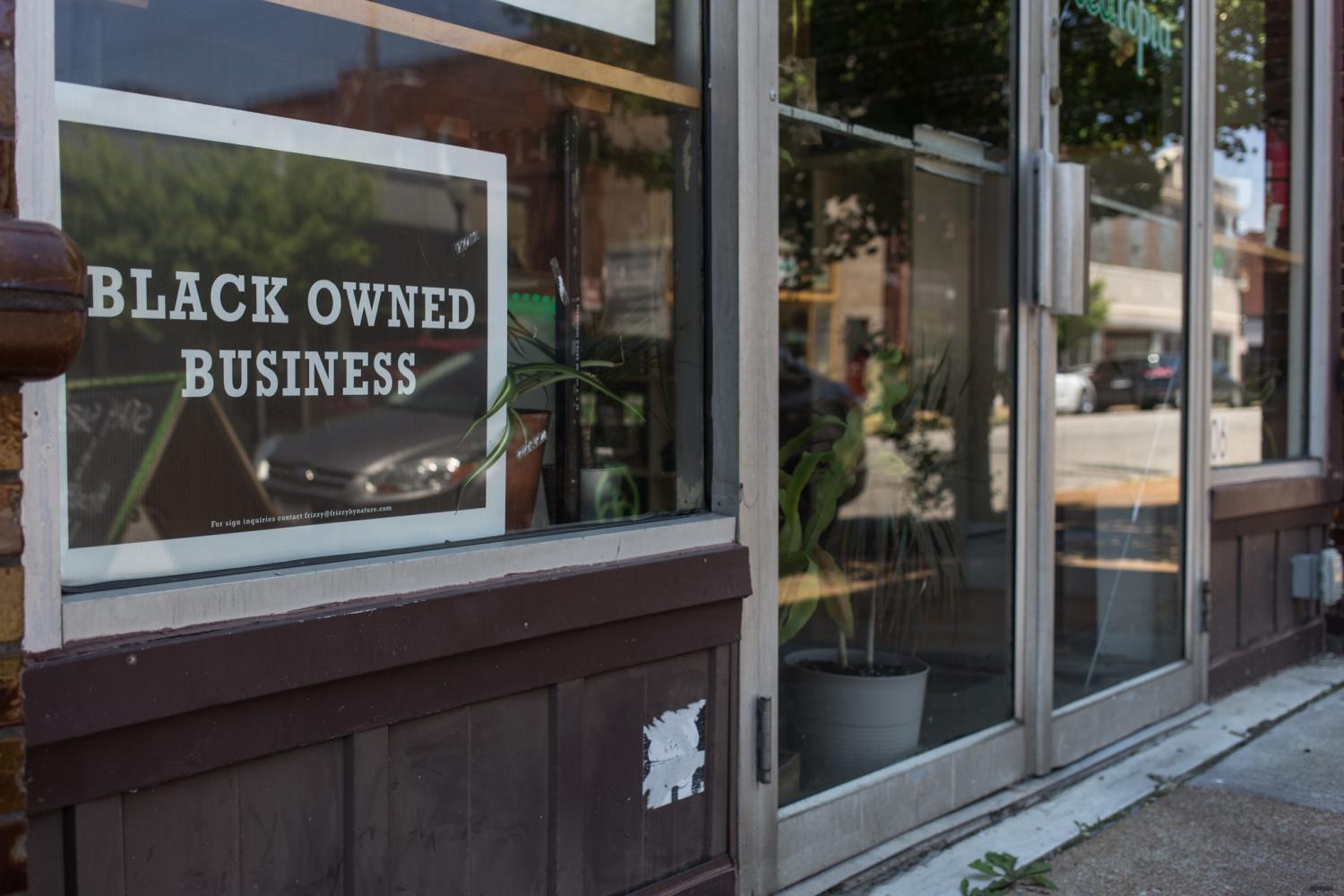
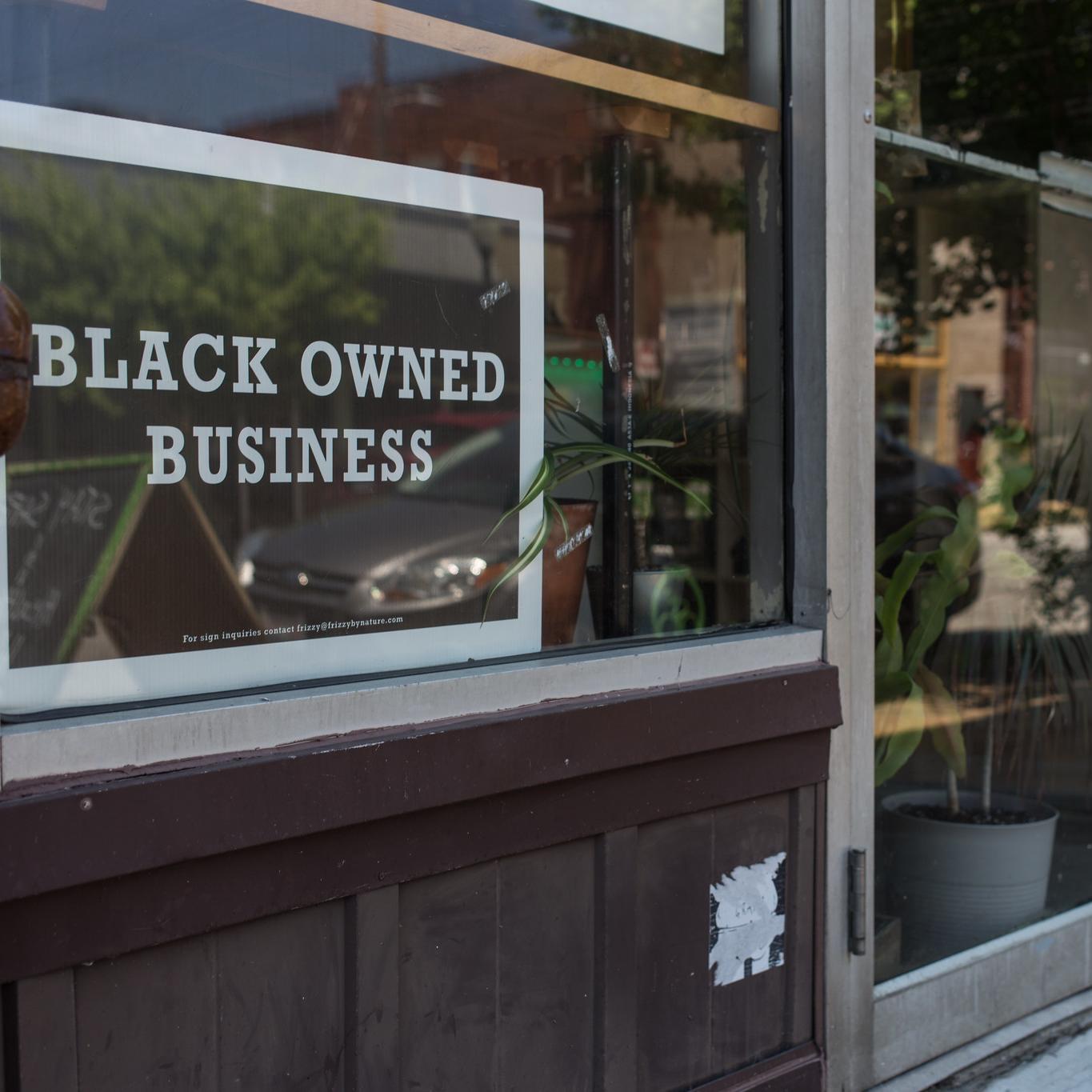
Black Friday will certainly look different this year. Shoppers won’t be camping outside of stores in the early dawn or stampeding to chase flat screen TVs. Instead, many deals are extending for the whole month of November, and most are moving online. But beyond an extended Black Friday, there’s also another, more meaningful, trend that may also affect sales: choosing to shop at Black-owned businesses.
Long before Black Friday, the outlook for Black-owned businesses was bleak
Black business owners have been twice as likely to close up shop during the coronavirus pandemic than other small businesses, an August study from the Federal Reserve Bank of New York finds. Meanwhile, of course, there have been continued protests over police shootings of Black men and women and the failures of the justice system. In this extremity, many have taken action with their wallets, and some Black-owned businesses have seen increased sales.
Some large companies have also created programs to support Black-owned businesses. Facebook released a #BuyBlack Friday Gift Guide, and this week TikTok launched a hub for Black entrepreneurs that includes special partnerships and initiatives available on its app.
Black-owned businesses need sustained efforts to overcome structural barriers
A new report from management consulting firm McKinsey & Co., though, notes that more than one-off decisions, actions and donations are needed to transform the economic landscape in which Black-owned businesses strive to survive. In other words, our attempts to transform the economy must transcend moments of protest and celebration. These efforts for equity would pay off. In a landscape where Black-owned businesses earn the same amount of revenue as their white counterparts, the United States would gain $190 billion in GDP, the study estimates.
McKinsey’s report also details the challenges Black-owned businesses are facing, especially during the pandemic, and the type of coordinated action required to achieve revenue parity and community prosperity.
Some of the barriers Black entrepreneurs face in earning revenue and scaling include being disproportionately located in economically disadvantaged states and neighborhoods, disconnection from mentorship opportunities and, most importantly, intentional exclusion by financial institutions from potential capital, the report details. Black-owned businesses start with an average of $35,000 at their outset, while white-owned counterparts begin with $107,000, a 2016 study from the Stanford Institute for Economic Policy Research found.
Even before March, 58 percent of Black-owned businesses were at risk of financial distress, compared with 27 percent of white-owned businesses, the Federal Reserve Bank of New York claims. Pandemic-related distress has only heightened the risks of closure — one to remember this Black Friday as weather across the U.S. gets far colder, adding to the risks people face in contracting COVID-19.
“The aggregate barriers to starting and sustaining a Black-owned business translate structural bias into less access to capital, lower revenue, and dimmer prospects for business growth,” the McKinsey report states. “The mainstream financial system’s role in those barriers has helped to maintain Black Americans’ distrust of the financial sector as well as fear of debt.”
Recommended solutions in a pandemic response that resolves persistent issues include building what McKinsey calls “supportive ecosystems” for Black-owned businesses. These community-focused, cross-sector ecosystems would counteract structural barriers based on racism and exclusion using interventions such as enforcing anti-discrimination laws, increasing available capital contributions and developing more diverse management teams in the private sector.
Five ways to build supportive ecosystems for Black entrepreneurs
McKinsey lists five interventions as remedies to the barriers that Black entrepreneurs face:
First, build relationships between anchor institutions in the community and Black-owned businesses with a mix of advisory and advocacy roles.
Next, public, private and social sectors should work together to ensure that anti-discrimination laws and policies are updated and enforced.
Most importantly, financial institutions could provide greater opportunities for start-up and expansion capital with fewer strings attached, as well as offering guidance on finding and securing funding.
Anchor institutions in the private and social sectors can also offer resources to re-skill and up-skill workers to help reinforce business capabilities and build systems of knowledge-sharing, with a special focus on digitizing management and workflows.
Finally, the private sector can consciously form mentorship and sponsorship networks for Black workers and leaders within companies, and — on a larger scale — cities and regions developing partnerships between startups and similar established businesses.
More cities are responding to the needs of Black businesses
Some cities had already been striving to strengthen their Black-owned businesses before small business distress, new cases of police brutality and resulting protests hit the news this year. In Memphis, The 800 Initiative aims to help Black-owned firms in the city increase their revenue by $50 million within five years. Inspired by Memphis, fellow Tennessee city Knoxville created its own 100Knoxville plan with a mission to increase the revenue of Black-owned firms with paid employees by $10 million by 2025. Part of Knoxville’s strategy is improving access to social, political and financial capital — methods that directly align with McKinsey’s recommendations.
Brandon Bruce, lead partner in the 100Knoxville initiative, notes that achieving marked progress in breaking down stubborn barriers requires tireless efforts. He writes, “When it comes to supporting Black-owned businesses in Knoxville, it’s about sustained commitment to growth in order to create jobs and wealth in our community for generations to come.”
This type of commitment can certainly begin on Black Friday, but it must last for many Fridays to come if communities are to see results.
Image credit: Paul Sableman/Flickr
Interface Raises the Floor on Sustainable Building Materials


Interface, the global commercial flooring company known most for its popular carpet tiles, recently unveiled a collection of carbon-neutral products called Embodied Beauty.
The new carpet tile collection features designs inspired by nature, which the company manufactures in line with its "Climate Take Back” mission statement. The seven new carpet styles will all be carbon neutral across the entire lifecycle, adding to the company’s carbon-neutral floors product line launched in 2018. Further, three of the new styles will also achieve what the company says is a first: a carbon-negative carpet tile, one example of the company’s cradle-to-gate program Interface announced last week.
Interface states in a video that companies must learn to “love carbon” as a “building block” that gives them a path toward designing and building better products.
These latest developments build on the company’s long sustainability journey, which has enabled Interface to reduce its tiles’ carbon footprint by 74 percent since 1996, in part with its claims that some of its carbon tiles can actually sequester carbon.
Interface turns to Japanese design
Japanese aesthetics of minimalism, restoration and natural organic beauty inspire this new Interface collection, says Kari Pei, vice president of global product design at Interface. The collection’s design evokes feelings of connectedness with nature by embracing the principles of ikigai, the Japanese idea of "having a purpose."
Pei adds that there are elements of another concept, kintsugi, which represents the art of mending broken objects to create new things, which fits with the manufacturer’s closed loop approach to flooring. Finally, the texture of the tiles invokes sahiko, a decorative Japanese form of stitching.
Full of carbon, as well as Zen
The Embodied Beauty collection is currently available in the Americas and will launch globally in 2021. The collection features three styles which combine with the company's new sustainable carpet backing.
This backing, says Interface, uses specialty yarns along with a proprietary tufting process. Tufting builds on an ancient tradition of knitting that allows extra yarn to be looped into a knitted base with “U” shapes, creating a denser knit, which in turn means more material is available to act as a carbon store. The base of the tiles includes bio-based materials as well as content with a high amount of recycled content.
John Bradford, Interface’s chief science and technology officer, says that by capturing carbon in the carpets’ raw materials, these same materials can be used over and over again. He adds that 70 percent of a material’s carbon footprint is attributed to the extraction and processing of raw materials. By reusing materials again and again, the carpet's carbon impact is lowered even further.
The popularity of sustainable is rising
The growth of the sustainable flooring industry reflects wider pressures on designers to specify products that have a lower carbon impact through third-party environmental product declarations (EPDs). Interface, for example, can point to at least two dozen EDPs by which the company measures its products’ environmental performance.
The global building industry is responding to these trends. For instance, over the last five years the nonprofit Climate Bond Initiative has launched over 80 climate certified bonds for low-carbon buildings. These trends reflect growing calls for low-carbon development by international bodies like the United Nations Global Alliance for Buildings and Construction. In terms of the global flooring market, a recent market report found a growing emphasis within the industry on research and development for sustainable and recyclable flooring. There are growing markets for supporting the use of sustainable building components and finishes, too.
Interface’s new carbon-focused flooring products are a relatively small, yet crucial element to achieving a net-zero economy. Of course, the red carpet might not be rolled out any time soon to announce a fully sustainable flooring industry, but at least Interface is rolling out the green.
Image credit: Interface corporate website
Report: World’s Largest Banks Funding Biodiversity Loss


It is easy to descry companies engaging in activities that drive biodiversity loss, but there is another player that is equally, if not more responsible. Both direct and indirect involvement with corporations’ activities in global food production, mining, fossil fuels and other harmful environmental practices accelerates when provided with the capital to do so.
To that end, according to a report produced by Portfolio Earth, the world’s largest banks invested more than $2.6 trillion in sectors that resulted in biodiversity loss and wildlife destruction in 2019.
The issue here, according to the report’s authors, is banks loaning and funding companies that engage in biodiversity destructive activities without any accountability. These banks lack environmental liability regulations and frameworks that measure the environmental impact of its activities. According to the report’s findings, activities like tourism, infrastructure and the relocation of people - along with mining, fossil fuels, and global food production, together comprise the primary drivers of the current biodiversity crisis.
What is this crisis? Portfolio Earth claims that three-quarters of earth’s land surface and two-thirds of ocean surface has been altered, leaving only 23 percent of land and 13 percent of ocean as wilderness. This is the furthest we have come to pushing environmental boundaries and according to Portfolio Earth, we are facing the consequences.
Portfolio Earth is a collaboration of financial and environmental experts who analyze the financial sector's role in biodiversity destruction and ways of combating this. The report analyzed the financial activities of financial institutions including Bank of America, Citigroup, JP Morgan Chase, Mizuho Financial, Wells Fargo, BNP Paribas, Mitsubishi UFJ Financial, HSBC, SMBC Group and Barclays.
The report’s authors compared investments in sectors: forestry and non-food forest commodities, fossil fuels, tourism, metals and mineral mining, relocation of goods and people, infrastructure, food production and agricultural commodities. Of all financial activity analyzed, 32 percent was related to infrastructure, 25 percent for metal and mineral mining, 20 percent for fossil fuels and 10 percent for food production – and the global food sector, says Portfolio Earth, has the largest impact on biodiversity worldwide.
While bank investments may be diverse, these financial institutions have one thing in common - no systems are in place to measure the impacts of their funding.
The biggest change stressed by authors is to “rewrite” financial rules. This means institutionalizing and standardizing frameworks that financial institutions must navigate when they provide funding and loans to their clients. Such frameworks would hold banks responsible for any environmental harm caused by its activities and allow for its impact measurement. While some banks engage in socially responsible efforts, such efforts are not as sufficient as having environmental liability regulations in place. Portfolio Earth says Brazil is the only country with such regulations on the books.
Along with new regulations, the report’s authors call for transparency and banks to stop funding fossil fuels, overfishing, deforestation and ecosystem destruction. An example of direct funding is the financing of gold mining operations; indirect funding covers the use of gold in other industries, such as the manufacturing of computers and other electronic devices, also has an impact on the environment.
Why is making such a distinction important? The report reveals that 66 percent of funding was related to biodiversity loss activities and 34 percent was investments in companies that indirectly contribute to biodiversity loss. Direct impact investments were higher among banks in Africa and the Asia Pacific Region compared to banks in North America and Europe.
It’s not just the financial sector that requires change. Portfolio Earth calls upon governments to stop protecting banks and enforce financial rules to hold banks accountable for damage caused by their funding. This report has made one thing very clear: The world’s largest banks are propelling wildlife destruction and change is required from the top down.
Image credit: Trevor Cole/Unsplash
Microsoft Commits to Sustainable Jet Fuel to Power Future Employee Air Travel


Last month, Microsoft announced a first-of-its-kind partnership with Alaska Airlines to purchase sustainable aviation fuel. The agreement involves the purchase of credits to be used by Microsoft on Alaska Airlines routes traveled most frequently by the tech giant's employees — namely from Seattle to Los Angeles, San Francisco and San Jose, respectively. Microsoft said the move to purchase sustainable jet fuel will significantly reduce the carbon dioxide emissions associated with its flight-based business travel.
The fuel credits will be purchased from Amsterdam-based SkyNRG, which makes sustainable aviation fuel (SAF) out of various feedstocks including used cooking oil. SkyNRG's SAF is a blend of waste oils and conventional aviation fuel. Theye Veen, managing director of SkyNRG, said he hopes that the partnership with Microsoft will encourage other large companies to enter similar agreements. Veen went on to assert that SAFs are a “once in a century” opportunity to change the energy source used by an entire industry.
Microsoft responds to an evolving travel industry
As part of the partnership, Microsoft, Alaska Airlines and SkyNRG say they will participate in Clean Skies for Tomorrow. Run by the World Economic Forum, the coalition's goal is to increase the aviation industry’s demand for sustainable jet fuel and educate suppliers on switching from conventional fuel mixes. One advocate of sustainable jet fuel is the International Civil Aviation Organization (ICAO), an organization run by the United Nations. The ICAO recently stated that SAFs, along with carbon offsetting, operational improvements and new technological standards are crucial to reducing aviation emissions.
Alaskan Airlines itself is no stranger to sustainable fuels, having tested and advocated their use since 2011. The airline has also recently announced a four-year SAF agreement with Neste, another sustainable fuel refiner. On that point, Neste claims its fuel achieves an 80 percent reduction in greenhouse gases compared to conventional jet fuel.
To date, approximately 30 airlines have tested sustainable aviation fuels globally. Hence Alaska Airlines' claims that its greenhouse emissions reductions of 16 percent since 2012 make it stand out across the aviation sector. Across the entire aviation industry, emissions rose by 32 percent between 2013 and 2018. Considering that commercial air travel is responsible for 2 to 3 percent of global carbon emissions, much work lies ahead.
A long journey for sustainable jet fuels
If sustainable jet fuels are going to get off the ground, then the issue of volume comes into play, too. The sheer volume of jet fuel required by the industry each year, some 73.7 billion gallons (278 billion liters), is staggering. To replace this or even supplement this with sustainable fuels will require a “mammoth effort” says Joanne Bailey, an industry commentator. Not only that, the debates around fuel versus food crops still rage on. Yet, alternatives that do not compete with food such as algae, do offer some potential. To that end, in 2014 TriplePundit reported on Southwest Airlines' use of forest residue waste biofuel in its aviation fuel, another potential solution.
Carbon negative ambitions at Microsoft
As far as Microsoft is concerned, sustainable fuels are just one part of an ambitious sustainability strategy. Microsoft aims to be carbon negative by 2030, which means it must remove more carbon than it emits. Yet, Microsoft is going a step further, stating that by 2050 it aims to completely eliminate all historical emissions, dating back to the company's founding in 1975, from the company. Aviation is one of the more difficult barriers to these goals, according to Judson Althoff, Executive Vice President of Microsoft’s Worldwide Commercial Business. Yet, he asserted that the new sustainable fuel agreement will help Microsoft get ahead of any possible large scale return to flying after business travel rebounds from the ongoing COVID-19 shutdowns.
Business travel post COVID-19
Althoff’s comments highlight a salient point amid COVID-19 shutdowns. The future of work, how we travel there, and if we go at all, have never been more relevant. Microsoft itself is leading the charge for home working, having introduced a “hybrid-workplace” plan to encourage home working last month. Google is doing the same. However, only time will tell if workers return in their droves to the flight check in desk. If they do, at least at Microsoft they will be doing it more sustainably.
Image credits: Alaska Airlines Newsroom
This New Plan Charts the Path to a Zero-Carbon U.S. Economy by 2050
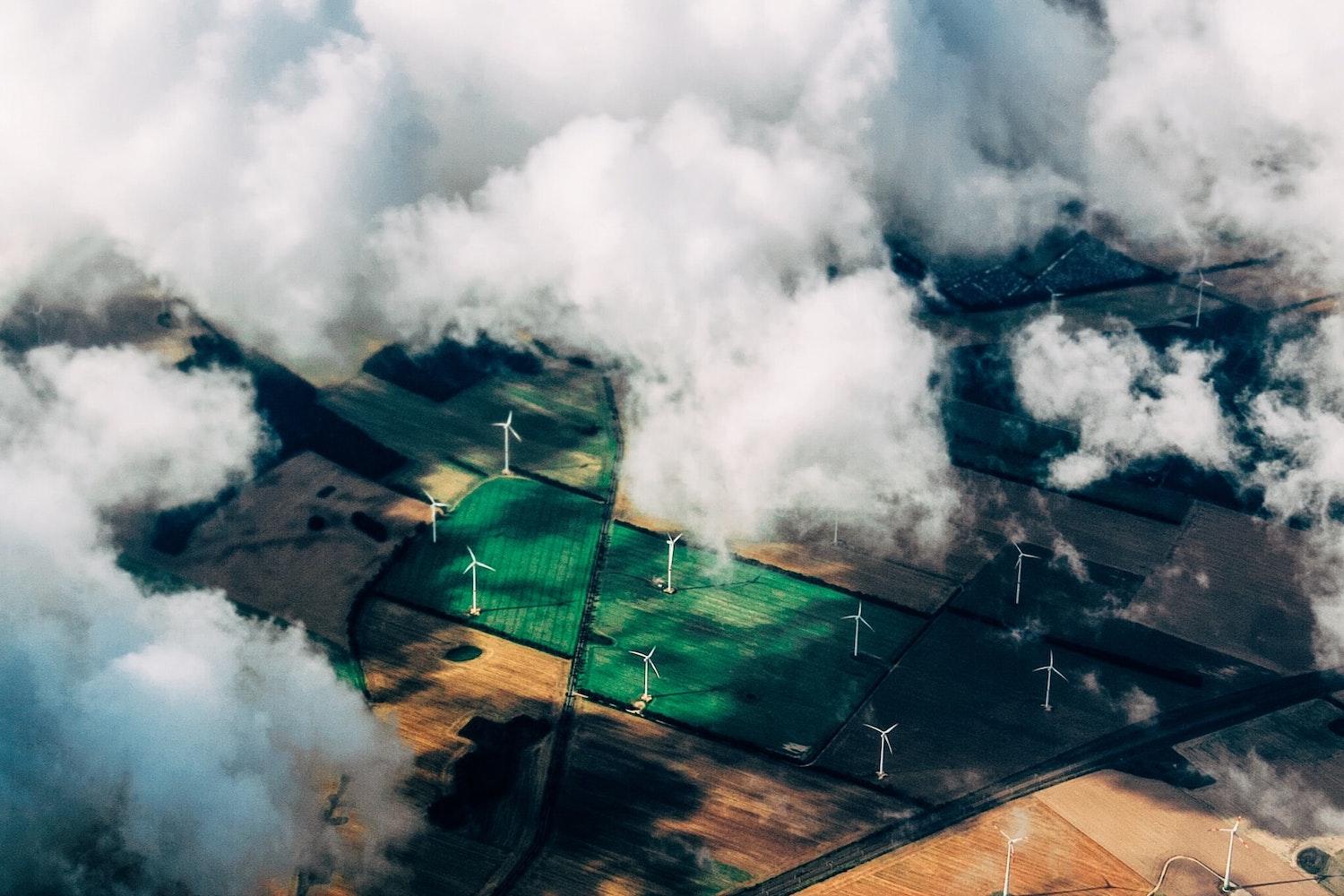

Last week, the U.S. arm of the United Nations-affiliated Sustainable Development Solutions Network released a comprehensive strategy to create a carbon-neutral U.S. economy by 2050. Called America’s Zero-Carbon Action Plan (ZCAP), the agenda was developed by over 100 researchers at dozens of universities and institutions across the country and details policy solutions for the power, transportation, industry, buildings, food and land-use, and materials sectors.
According to the findings laid out in the plan, transitioning almost entirely to renewable energy by midcentury would cost only 0.4 percent more of the U.S. gross domestic product (GDP) per year compared to sticking with fossil fuels. And the transition has the potential to create around 2.5 million new jobs annually over the next 30 years.
The report’s release coincides with a poll by Climate Nexus, the Yale Program on Climate Change Communication, and the George Mason University Center for Climate Change Communication which found that 82 percent of U.S. voters support a 100 percent transition to a clean energy economy.
The reality is that the transition is already happening in the U.S. economy as solar and wind outstrip coal and natural gas in cost effectiveness. In fact, according to ZCAP, renewable energy’s share of the American power supply now exceeds that of coal for the first time since 1885. Coordinated efforts by the federal government — both executive and legislative — could spur the economy to a faster than business-as-usual transition.
Renewable energy is a good investment bet
Clean energy investments make sense as renewables continue to outpace fossil fuels on price, but they may also help lead to a more sustainable recovery from the COVID-19 pandemic. Plenty of investors have already begun to heed the call: New analysis from BloombergNEF estimates that global investment in clean energy will reach $11 trillion by 2050, which aligns squarely with ZCAP. However, private-sector investment must be complemented by regulatory certainty and public-sector investment to maximize potential, the plan details.
The last time a major government investment spurred the private sector to the scale proposed in ZCAP was the American Recovery and Reinvestment Act of 2009 (ARRA). For example, in Maryland, the state energy agency estimated that its $9.4 million ARRA-funded program to install solar systems on public buildings generated over $36 million in private investments and created 80 jobs. In general, every dollar spent on energy efficiency will yield $4 in return.
Energy efficiency as a cornerstone of a zero-carbon future
Energy efficiency is the workhorse of any climate change plan. Reducing waste in energy use and demand means less energy is required to meet commercial, industrial and residential needs. Further, because generating electricity with fossil fuels uses copious amounts of water, reducing energy demand through efficiency is an effective water conservation tool.
ZCAP proposes a National Energy Conservation Code for Buildings. This could be considered a ramped-up version of the existing International Energy Conservation Code, which is updated every few years and sets minimum standards for energy efficiency in buildings.
Buildings account for about 12 percent of direct carbon emissions in the U.S., and, as the plan points out, U.S. buildings have a larger carbon footprint than the entire greenhouse gas output of Brazil or Germany. Reducing those emissions by addressing onsite fossil fuel consumption and construction is a critical step in reaching zero-carbon. Further, construction and property management jobs by their nature cannot be outsourced or moved out of the country.
The water sector: The missing piece in the climate puzzle
The ZCAP lays out a comprehensive strategy for a zero-carbon economy, but it misses one big opportunity to contribute: the water sector.
Most climate plans do not consider the important role that the water sector could play. Many water conservation strategies can achieve the same energy savings — and therefore the same carbon reductions — as traditional utility energy-efficiency programs, but at half the cost.
Water utilities often own or lease extensive property where renewable energy could be deployed to help power their systems. Everything from biogas at wastewater treatment plants to floating solar panels that reduce the evaporation of water in retention ponds (which coincidentally also help keep the solar panels cool and improve their efficiency) should be included in any climate plan.
To stave off further impacts from climate change, every sector has a role to play. The water sector will feel the brunt of climate change — and it has the opportunity to help reach the solution.
Image credit: Thomas Richter/Unsplash
Mastercard Invests to Help Women Entrepreneurs Recover From COVID-19


Small businesses led by women, which have been hit disproportionately hard by the coronavirus pandemic, will soon get new backing from Mastercard. In a statement released last month, the financial services giant reaffirmed a prior goal to help 25 million women entrepreneurs and 50 million small businesses prosper through better access to the digital economy — and bolstered the commitment with a new partnership.
Mastercard and its Mastercard Impact Fund are collectively putting a new $20 million worth of investment to work through CNote, an impact investment fund founded by women. The money will be used in CNote’s impact management Promise Account. The partners say they hope the additional funding will help female and minority owned businesses to grow and recover from the pandemic and related economic disruptions.
The recent Small Business Summit run for free by Mastercard in partnership with Create & Cultivate is also testament to these efforts. The new CNote partnership is also an evolution of CNote’s earlier involvement in Mastercard’s startup engagement program, Start Path, which launched in 2014 to provide digital mentorship resources to under-served communities.
Partners come together for systemic change
The $20 million provided by Mastercard will be deposited into Community Development Financial Institution banks (CDFIs), as well as in credit unions designated to help low-income communities and communities of color. In this way, the funds form part of Mastercard’s wider commitment, starting in seven cities, to equalize opportunity and close current racial wealth distribution gaps.
CNote is also focused on fighting historical systemic inequalities. In a statement announcing the partnership, CEO Catherine Berman said these ingrained inequalities necessitate an “ongoing, active effort to redesign” current systems. She emphasized that everyone should be able to access financial freedom and economic opportunities, regardless of their skin color or where they were born.
Mastercard, women entrepreneurs and inclusive capitalism
Mastercard is no stranger to inclusivity programs, having worked with CDFIs for the last 10 years. The company’s Center for Inclusive Growth has already partnered with such organizations as the Community Reinvestment Fund USA, Accion Opportunity Fund, Grameen America and the Center for Economic Opportunity.
The financial services company’s focus has been on helping small and micro businesses to obtain growth capital through better access to digital technologies. One example of this digitization work is with nonprofit microfinance organization Grameen America. Here, Mastercard helped facilitate $1.6 billion in small business loans for women entrepreneurs. The partnership also enabled Grameen America to remain open during the COVID-19 crisis, highlighting the potential of digitization for weathering changing economic forces — which so far have impacted women and people of color hardest.
Thankfully, Mastercard isn’t the only financial company backing women entrepreneurs. The European Bank for Reconstruction and Development says its Women in Business programs have the backing of over 30 financial institutions. Still, according to the European Parliament, 47 percent of women still lack adequate digital skills within the EU today — meaning digitization could play a key role in harnessing the untapped potential of women entrepreneurs.
Inclusive business hangs in the balance
Last year’s State of Women-Owned Businesses Report, commissioned by American Express, highlighted the successes and challenges faced by women entrepreneurs in the U.S. today. According to the report, there were just under 13 million female-led businesses in America in 2019. Women-owned businesses employed 9.4 million people and generated $1.9 trillion in sales last year — and they grew by 21 percent between 2014 and 2019. The growth in businesses owned by women of color was nearly twice that figure, standing at 43 percent.
Yet, according to the American Express report, even with these successes there still remain big challenges, particularly for women entrepreneurs of color. Although women entrepreneurs receive less funding in general, women entrepreneurs of color fare far worse — and the disparity is growing. Businesses owned by white women also earn far higher revenues compared to those owned by women of color. And with the exception of businesses owned by Asian women, the average revenue for women of color owned businesses fell between 2014 and 2019, according to the report.
Other trends include the growth of part-time entrepreneurs, dubbed “sidepreneurs." These have grown by 32 percent in the same time period, far outpacing the growth of any other business venture. Also, the growth in the number of women sidepreneurs is nearly double the growth of women-led businesses overall. Drilling down even further, the growth of African-American/Black women sidepreneurs is triple the absolute rate in sidepreneurs.
With the spike in women returning to care-giving positions amid the COVID-19 crisis, it is plain to see why female-led businesses need targeted support. Therefore, while it’s encouraging to see more women starting their own businesses, many of these positions are precarious given current circumstances. This makes Mastercard’s recent work and other similar initiatives crucial if we are to avoid a reversal in progress.
Image credits: Dan Burton and Adam Winger via Unsplash
Back from the Brink: U.S. Chamber of Commerce Finds Its Footing in the 2020 Election Cycle
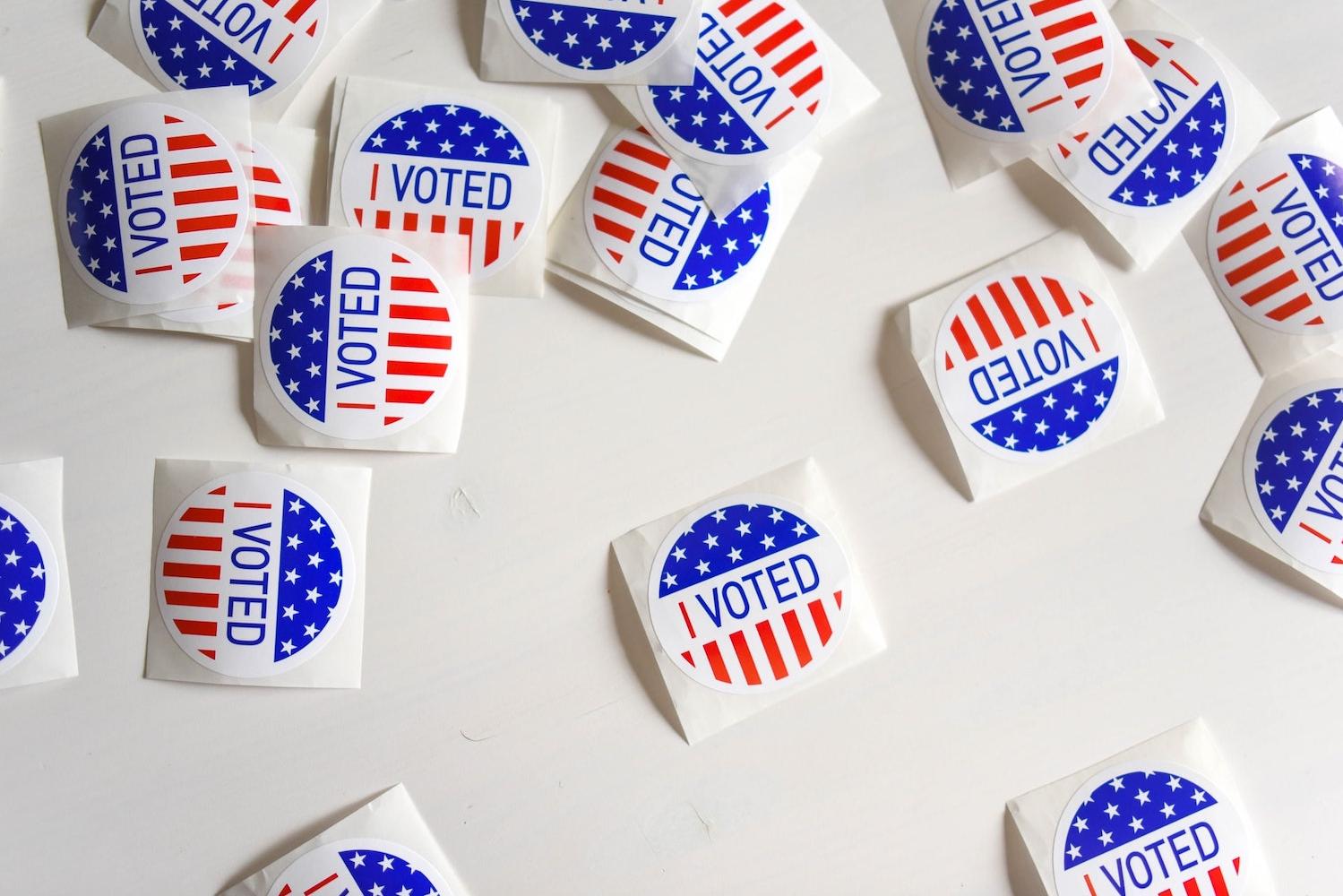
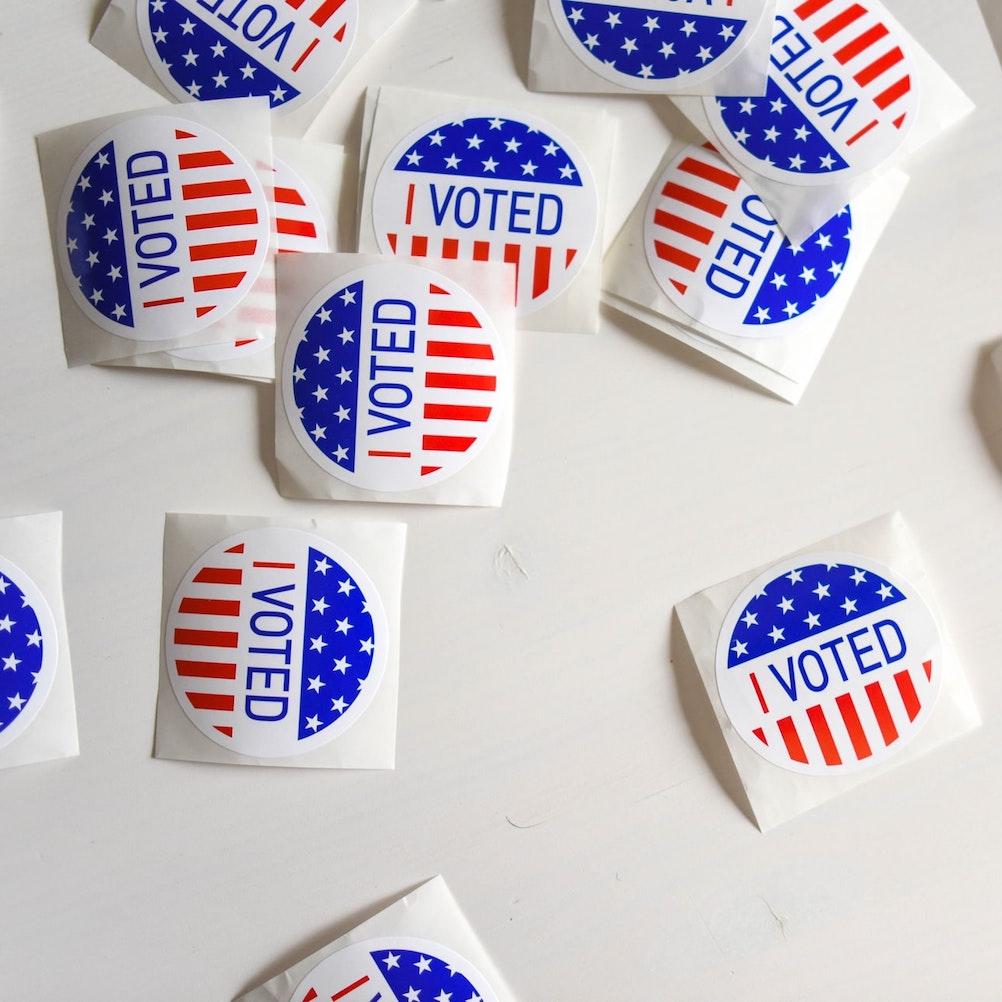
Just a few years ago, the U.S. Chamber of Commerce was teetering on the edge of irrelevancy. Among other issues, the organization’s conservative track record on climate action, tobacco sales and gun safety placed it at odds with prevailing trends in public sentiment. Top corporations and local Chamber affiliates began cutting or suspending their relationships with the Chamber, too. However, indications of a reset began to appear in recent years — and the Chamber has displayed signs of a more radical shift in the runup to Election Day 2020.
U.S. Chamber of Commerce responds to public sentiment
Hints of a reset emerged in 2018 when the U.S. Chamber of Commerce joined many other business leaders in publicly excoriating the Donald Trump administration over its family separation policy, through which hundreds of children were separated from their parents at the U.S.-Mexico border.
Last year, the Chamber again found itself at odds with President Trump when it added a page to its website that directly contradicts the president’s ongoing efforts to stymie climate action. The new web page affirms climate science, calls for reducing greenhouse gas emissions, and advocates for U.S. leadership on global decarbonization.
“Climate policy should be informed by the best science and observations available," the Chamber now states on its website. "The U.S. should continue to be the world leader in climate change science and the major sponsor of the research used in multi-lateral scientific forums."
Lip service or real change?
The Chamber’s ongoing support for allies of fossil fuel stakeholders and its entanglement in environmental justice issues does undercut the force of its public statements. Nevertheless, public statements can be a springboard for change. In that regard, the Chamber of Commerce seemed poised to take a more proactive approach on contentious issues as Election Day 2020 drew closer.
One recent example occurred on Oct. 7 when the Chamber drew a roadmap for COVID-19 recovery in a public statement. Though not criticizing President Trump by name, the statement draws attention to the president’s failure to address the COVID-19 crisis and a raft of underlying issues including climate change, broadband and educational access, and resources for displaced workers. The list also includes immigration reform, likely referring to the Chamber’s support for immigrants in the DACA program — which defers deportation for undocumented people who arrived in the U.S. as children and meet certain criteria — in addition to its condemnation of the family separation policy.
“Whatever the outcome of the 2020 election, our elected leaders will face the same slate of challenges: bringing the pandemic under control, restoring our nation’s health, and revitalizing our economy,” the Chamber emphasized.
Trump administration awakens the sleeping dragon
The cautious tone of the Oct. 7 statement contrasts sharply with a public letter to the president issued by the Chamber of Commerce just one week later, on Oct. 15. The letter came in response to a new Executive Order that undermines diversity training programs among federal agencies and federal contractors.
Co-signed by 150 Chamber affiliates and trade organizations, the letter is a scathing, blow-by-blow criticism of the Executive Order. It is also a ringing endorsement of the current approach to diversity training.
“Federal contractors are firmly committed to maintaining a diverse and inclusive workforce and to providing their employees the necessary training to reinforce this goal,” the Chamber concluded. “The Executive Order on Combating Race and Sex Stereotyping does not help contractors in this regard, and in fact creates several significant obstacles and impediments.”
U.S. businesses stand up for the peaceful transfer of power
To be clear, the Chamber’s criticism of President Trump pales beside recent statements from other business leaders who have advocated for change in the runup to Election Day.
Just one recent example is a public statement cosigned by prominent Trump critic Mark Cuban along with 10 other top entrepreneurs and executives, lambasting the president’s handling of the COVID-19 crisis.
"While national leadership could have coordinated a swift response to protect both lives and livelihoods from the impact of the pandemic, small business were instead left largely to our own devices,” they wrote, while making the case to vote Joe Biden in as president.
Mild as it is, the Chamber of Commerce does count itself as part of a bipartisan groundswell of support for a peaceful transfer of power. In addition to business stakeholders, scores of prominent Republicans have also publicly advocated for a change in administrations, including former members of the president’s own staff.
There are some signs that this bipartisan environment has enabled the Chamber to advocate more forcefully for a peaceful change in administrations, a shift that is all the more significant in consideration of the president’s ever more desperate attempt to retain power, regardless of the will of the voters.
On Oct. 27, for example, the Chamber of Commerce joined the CEO-led coalition Business Roundtable, the American Property Casualty Insurance Association, ITI, the National Association of Manufacturers, the National Association of Wholesaler-Distributors, the National Retail Federation, and the Retail Industry Leaders Association in a joint statement calling for peace and patience during and after Election Day.
The public statement is a direct rebuke to President Trump, who concluded his 2020 campaign by insisting that vote-counting must stop at the stroke of midnight on Election Day. The imaginary deadline contradicts generations of legal elections precedent allowing for days if not weeks of counting before an official result is certified.
“Even under normal circumstances, it can take time to finalize results,” the Chamber of Commerce and its co-signers observe. “We urge all Americans to support the process set out in our federal and state laws and to remain confident in our country’s long tradition of peaceful and fair elections.”
The Chamber’s participation in that exercise lends force to other nonpartisan efforts advocating for a peaceful transfer of power, such as statements from the Interfaith Center on Corporate Responsibility, a coalition of more than 300 faith-based investors. On Oct. 22, ICCR sent a letter to more than 200 corporations urging them to push back strongly against the president for inventing the idea of widespread voter fraud and for encouraging his “army” of supporters to watch voters at the polls on Election Day.
The letter outlined a six-point strategy for corporations to use their platforms in support of a complete count, to condemn voter intimidation, and to advocate for a peaceful transfer of power. Most significantly, ICCR also advocated for corporations to direct their lobbying and political donations in support of these goals.
Given its track record of donating to Republican lawmakers who support President Trump, that last item will be a tough hill for the Chamber of Commerce to climb — but at least on this issue they have a running start, and a solid cushion of support from other business leaders.
Image credit: Element5 Digital/Unsplash
Shouldn’t Election Day Be a Holiday?
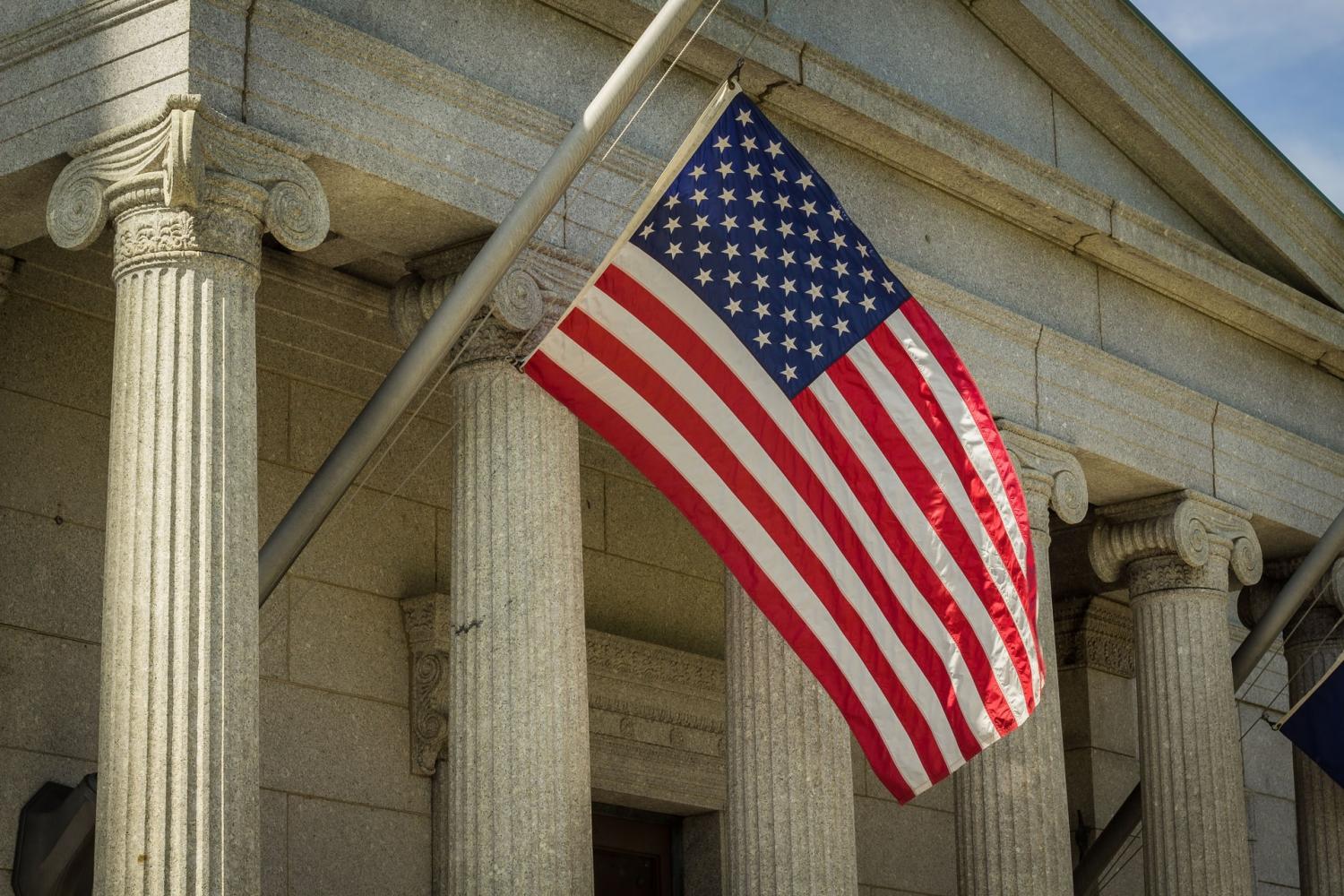
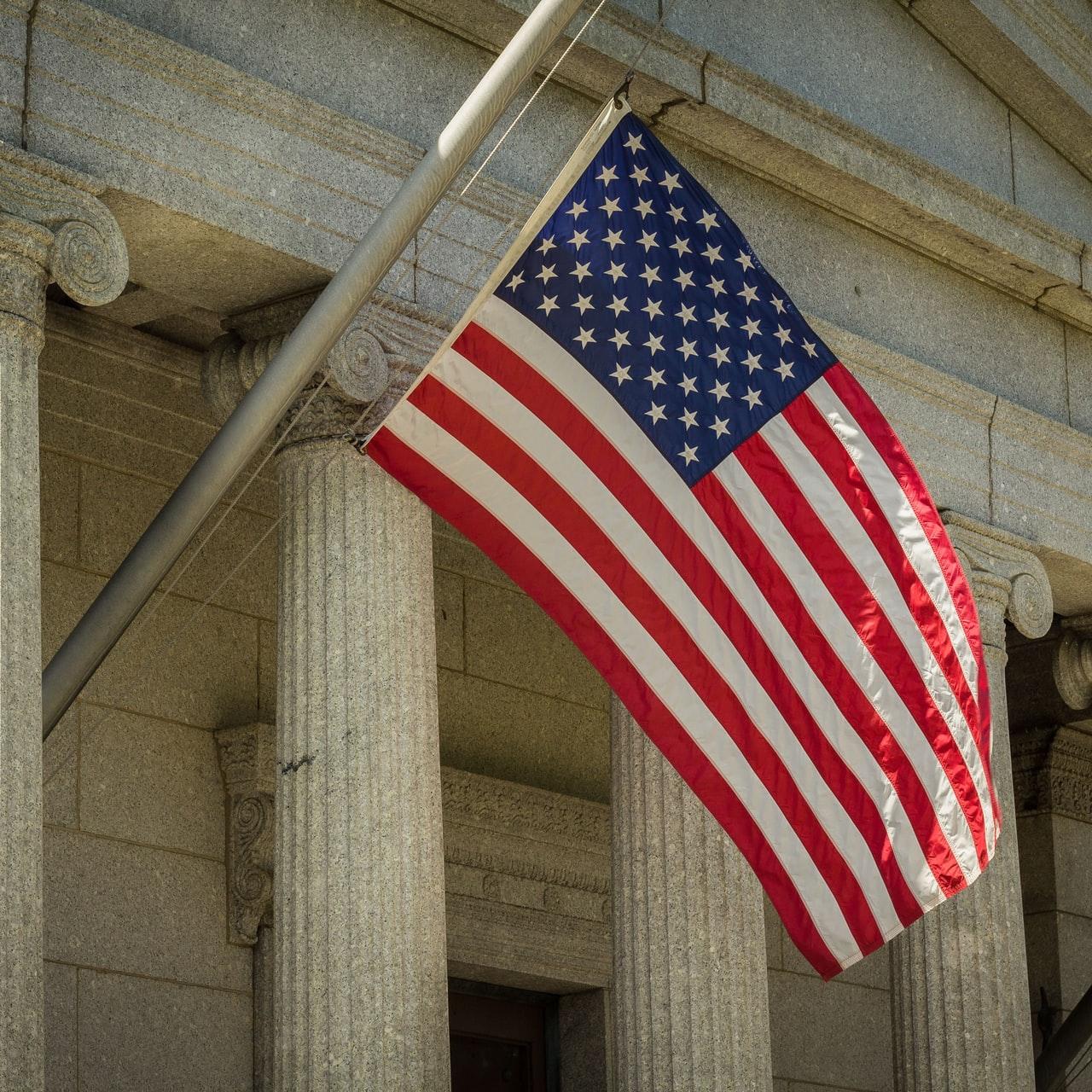
As of press time, the presidential election is too close to call. But no matter how the results shake out, the images we’ve seen over the past several days show that, by far, the U.S. needs to rethink how it manages Election Day.
Litigation over mail-in ballots. Long lines to vote early — or in person, depending on location. Citizens doubting whether their mail-in ballots would be counted. Drive-through lines for citizens to drop off their ballots in parking lots. And as a side note, there are the countless number of bleary-eyed employees who will have a hard time focusing on Zoom calls this Wednesday morning — if they don’t cancel them.
Affixing Election Day on the first Tuesday after the first Monday in November may have made sense in the late 18th century when the voting populace was limited to landowning white guys who had horses and servants at their disposal, ensuring their voices (and no one else’s) would be heard.
But the hoops through which voters have to jump in order to cast their ballots have shown that democracy in the U.S. could use a boost. Yes, there are several business coalitions, including Business for America, that are striving to ensure the key levers that protect voting rights are secured. But it's clear structural change needs to be made.
The quick solution would be to make Election Day a holiday, and the private sector could take the lead on lobbying for this in the halls of the U.S. Capitol.
Some brands, including Ben & Jerry’s, have made the case that Election Day should be a holiday. And in an interview with Minnesota Public Radio’s Marketplace, Andrea Hailey, CEO of Vote.org, said the nonprofit she leads counts more than 900 companies that participated in its paid time off program.
As Congress has shown no serious interest in making Election Day a federal holiday, Hailey said such a change would have to be up to the private sector. “Until we have a government that is really excited to make it so, I think it’s on corporate leaders and companies, who also have a stake in there being a healthy and thriving democracy, to go ahead and give a paid day off for Election Day and for election participation,” she told Marketplace’s David Brancaccio.
When you consider all the lost time resulting from workers spending hours in line to vote, another pragmatic way to look at Election Day as a federal holiday is that businesses could see a boost in productivity — and earn more goodwill from their employees. “Every minute spent in this democratic pursuit — including transportation to and from voting precincts, waiting in line, and casting a ballot — means lost wages,” wrote Katica Roy for Fast Company.
Image credit: Bonnie Kittle/Unsplash
U.S. Businesses Support Clean Power (Again) with Ambitious Plan for Wholesale Energy Markets
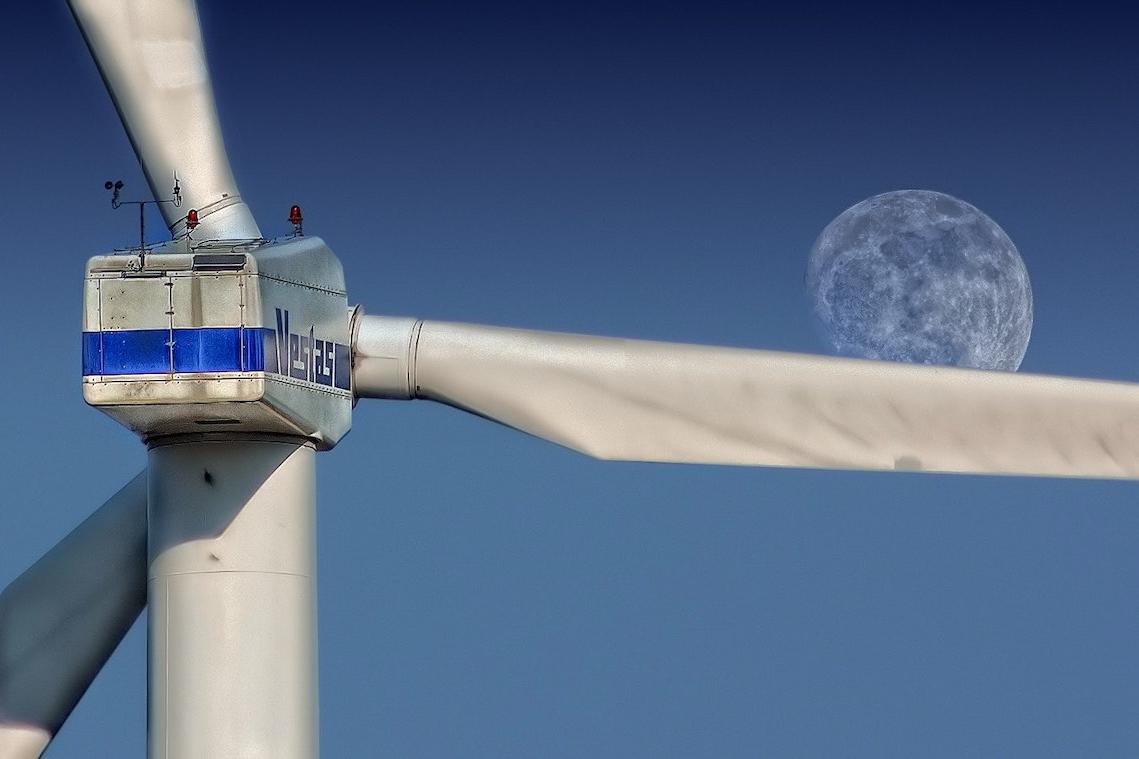
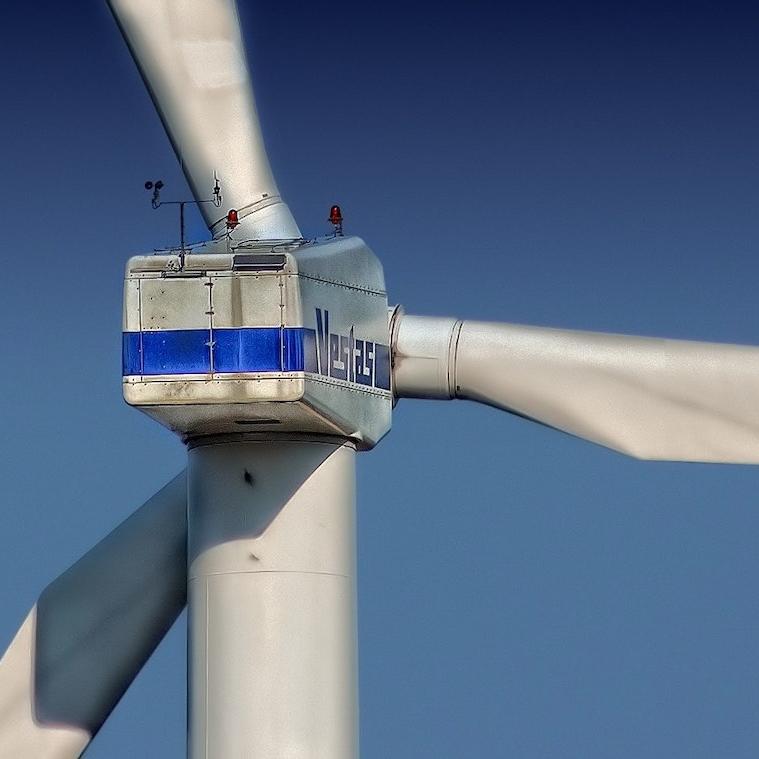
Leading U.S. corporations leveraged their massive buying power to support clean power during the Barack Obama administration, and a change of occupants in the Oval Office has not dampened their enthusiasm for a decarbonized economy. In the latest development, an influential business consortium has upped the ante with new guidelines for accelerating the renewable energy trend.
Big business unites behind clean power
The driving force behind the new push for clean power is REBA, the Renewable Energy Buyers’ Alliance. REBA launched in May 2016 with the aim of supporting then-President Obama’s signing of the 2015 Paris agreement on climate change.
As a project of Business for Social Responsibility (BSR), Rocky Mountain Institute, World Resources Institute and the World Wildlife Fund (WWF), REBA came out of the gate with a portfolio of more than 60 member companies that were already investing substantial sums in clean power.
REBA’s set its members on course toward a goal of shepherding 60 gigawatts worth of renewable energy into the U.S. energy profile by 2025. There was a quick change in the direction of U.S. energy policy following the election of Donald Trump in November 2016, but REBA members have continued to accelerate their decarbonization plans in support of a net-zero goal for the nation.
Pandemic or not, the clean power train stays on track
REBA has stuck to its course throughout 2020, even through the economic disruptions fostered by the COVID-19 pandemic.
The year opened on a note of optimism. With more than 200 companies in its portfolio, on Feb. 5 REBA unveiled a list of the top 10 biggest renewable energy buyers in the U.S. for 2019, with a combined total of more than 9 gigawatts.
Not surprisingly, the top slots were held by U.S. companies that feature prominently in national and global commerce. Facebook headed the list, followed by Google, AT&T, Microsoft, T-Mobile, Amazon, the aluminum and aerospace firm Ball Corp., and McDonald’s. Rounding out the top 10 was Honda, indicating that even companies headquartered overseas can influence energy trends in the U.S.
Even as the pandemic took hold, REBA launched a first-of-its-kind clean power networking program in May to address the important issue of data center sustainability. The group also issued a report charting pathways for accelerating renewable energy procurement among commercial and industrial users in April.
Renewable energy for everyone
This week, REBA took its efforts to the next level by formulating a set of guiding principles for reforming the wholesale energy market. The new Buyers’ Principles on Wholesale Market Design aims to support clean power access throughout the U.S. while cutting costs and improving grid reliability, with ample flexibility for individual users to carve out their own clean power plans.
The wholesale angle is an important development because in previous years, corporate clean power purchases mainly involved the construction of rooftop solar panels or on-site wind turbines at corporate facilities.
As the cost of wind and solar power fell, corporations began to purchase off-site renewable energy, but these purchases were narrowly defined and did not necessarily increase renewable energy access for others.
With the new Buyers’ Principles, REBA advocates for a transformation of energy policy that mirrors the rapid progress of new energy technology, opening up emerging options to corporations on a regional and national basis. Chief among those are new energy storage and smart grid technologies that enable demand-response incentives, which reward customers for off-peak usage. Scaling up new technologies, aligning them with government policy, and fostering market transparency and good governance are also in the mix.
The new focus on wholesale markets represents an understanding that corporate demand for clean power can spur further investments that increase access for everyone. That approach is exemplified by REBA member General Motors, which has engaged in a community-wide renewable energy program through the Michigan utility DTE, in anticipation of widespread electric vehicle adoption.
“The Buyers Wholesale Market Design Principles showcase how to optimize energy markets so that all customers can effectively pursue ambitious clean energy goals that improve air quality and address climate change,” explains Rob Threlkeld, vice chair of REBA’s board of directors and global manager of sustainable energy, supply and reliability at General Motors.
Regardless of the results of the 2020 presidential election, REBA members are poised to accelerate the clean power transformation in the U.S. The only question now is whether or not state and federal lawmakers will come along for the ride.
Image credits: Pixabay and Tom Swinnen/Pexels